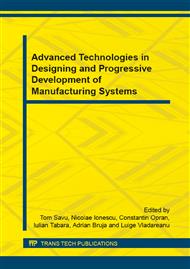p.245
p.251
p.257
p.263
p.269
p.275
p.281
p.287
p.293
Modeling of Diffusion with Bessel Functions
Abstract:
The equation with partial derivatives studied in this paper models the diffusion of oxygen through a passive layer made up of two oxides at low temperature or three oxides of iron at high temperature, estimating the fact that the corrosion phenomenon takes place into the oxides interface only after the oxygen penetrates the oxides layer. We model and analyze the diffusion phenomenon to which, until now, only the Bessel functions were recommended. In order to solve the differential equations with partial derivatives which model the diffusion, some analytic solutions with Bessel functions were obtained. These functions can be used in several technical domains due to the fact that they admit both real and imaginary input values.
Info:
Periodical:
Pages:
269-274
Citation:
Online since:
May 2015
Authors:
Price:
Сopyright:
© 2015 Trans Tech Publications Ltd. All Rights Reserved
Share:
Citation:


